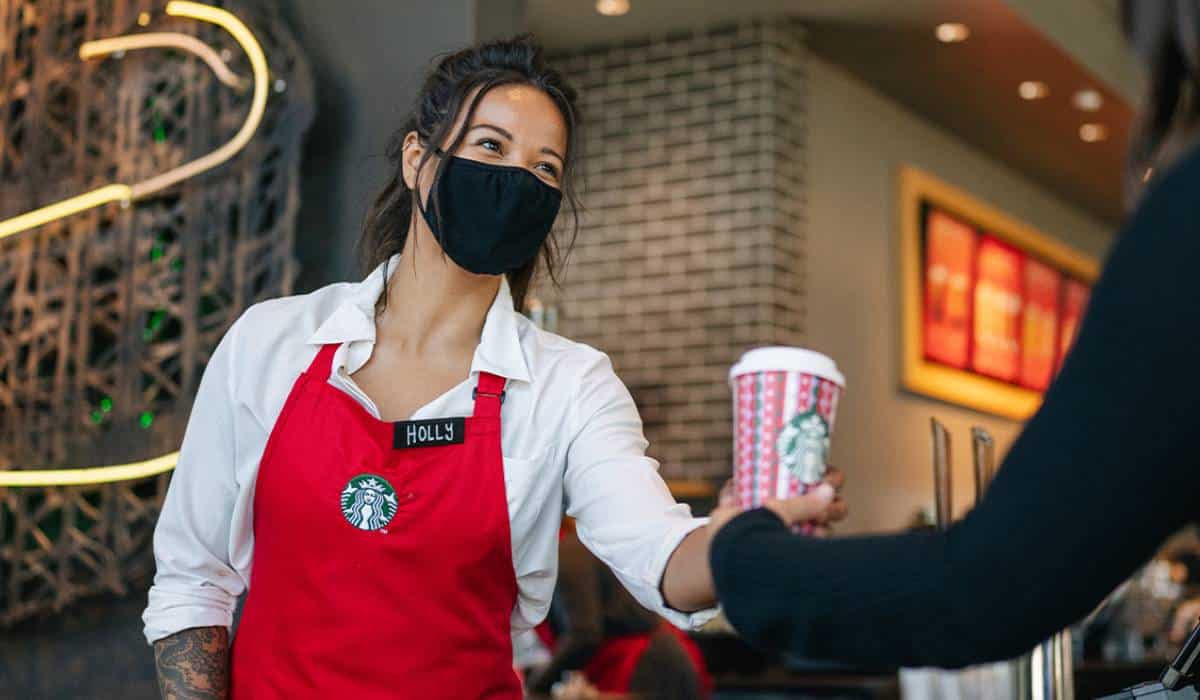Changes are afoot at Starbucks. While many details of founder and interim CEO Howard Schultz’s “reinvention plan” remain shrouded, for now, the coffee chain responded this week to one concern by closing 16 U.S. locations due to worker-reported incidents of drug use and other disruptions, according to The Wall Street Journal.
Starbucks will permanently shutter six units apiece in Seattle and Los Angeles; two in Portland, Oregon, and lone cafes in Philadelphia and Washington, D.C. They’re expected to close by month’s end. Starbucks said it would transfer affected employees to other locations.
On Monday, Debbie Stroud and Denise Nelson, SVPs of U.S. operations at Starbucks, shared a letter with employees, saying “creating a safe, welcoming, and kind third place is our top priority.”
“Because simply put, we cannot serve as partners if we don’t first feel safe at work,” the letter added. “The question on our minds is: How do we continue to show up for our communities while protecting our partners?”
Stroud and Nelson said the company reads “every incident report” filed. “… it’s a lot,” they wrote.
Starbucks said it’s going to provide de-escalation, active shooter, and mental health first aid training at upcoming store trainings in August, as well as outline clear policies and procedures around how to handle disruptive behaviors, when to call 911, how to engage local community resources or social services to support customers in need, protest preparedness, customer restriction procedures, and more.
Per the Journal, Starbucks received reports from employees about incidents they said involved drug use by some customers and, in other cases, members of the public.
READ MORE: Inside Starbucks’ Billion-Dollar Plan to Catch Up After COVID
The company also plans to allow store managers to now close restrooms, limit seating, or reduce operations if safety concerns warrant it. When needed, Starbucks said in the letter, it would adjust store formats, furniture layouts (like limiting seating to customers), staffing or test store-specific solutions, such as restroom occupancy sensors, new alarm systems, Lyft at Work, or partner with local Outreach Workers as well.
“Modifying operations, closing a restroom, or even closing a store permanently, where safety in the third place is no longer possible, always doing so with the utmost respect for our customers and the community and transferring partners to nearby stores if we close,” the company said.
On the restroom note, managers will have discretion to deny free access. This is a change of direction and one Schultz, during a New York Times DealBook event in June, hinted the company was rethinking in light of public safety concerns.
Starbucks has allowed open use of its bathrooms since May 2018. The policy came after police arrested two Black Men in a Philadelphia store after a Starbucks manger denied them from using the bathroom. The incident went viral at the time when Melissa DePino recorded the video and tweeted it out to nearly 12,000 followers. Within a few days, it had racked up 170,000 retweets. An example of the fallout: the location’s Facebook page had zero negative reviews on April 12 (the day of the incident). The following day, there were more than 330. Come April 14, 1,210.
Starbucks apologized for its handling of events and closed all U.S. stores for a day to conduct racial-bias training. According to reports, it was a roughly $24 million decision.
“There is an issue of, just, safety in our stores, in terms of people coming in who use our stores as a public bathroom,” Schultz said at the June DealBook event.
Other counter measures announced Monday include using Starbucks’ Shift Marketplace to create more stability for employees, with tools like Daily Earned to help managers better staff stores; mental health benefits—Lyra sessions, Headspace, free counselors for stores following a critical incident, and paid sick time; and benefits to address emotional and financial safety, including help with offsetting costs for college, fertility treatments, adoption, access to abortions or gender affirming procedures, DACA fees; as well as benefits like paid parental leave, CUP fund, and catastrophe pay.
“We hear the challenges facing you in stores, and we all have a lot more to still figure out – but we know we’ll get there because you have shown us, time and again, that our stores can be a place of hope, optimism and community for all,” the letter wrote.
Safety concerns were among the lead topics to surface during Schultz’s outreach efforts (collaboration sessions, surveys, open forums, and direct conversation), which he’s held since president and CEO Kevin Johnson retired on April 4.
Schultz inherited a complex dynamic. The National Labor Relations Board has certified unions at more than 130 of Starbucks’ 9,000 or so company stores, as of June. Workers rejected unionization in 15 stores and challenged in 11 others, the Journal reported.
Two of the closing stores—both in Seattle—are unionized. One, in Portland, petitioned to do so.
According to the Journal, citing a leader from Starbucks Workers United, the union organizing employees, said staff were surprised by the chain’s call to shutter the Seattle venues, “and that the company should have involved workers more in the decision.”
“It’s clear we’re living in a changing world where economic, societal, and operational pressures are colliding,” Schultz, who plans to remain atop Starbucks until the brand finds a new CEO, wrote Monday. “We’re seeing unprecedented cultural division and economic trauma—all while navigating a pandemic, and it seems as though every day there is a new crisis to address.”
Alongside Starbucks’ efforts to ease tension with employees, Schultz noted the chain’s business, as it’s built today, “is not set up to fully satisfy the evolving behaviors, needs and expectations of our partners or customers. It is not designed for the future we aspire to for ourselves and the communities in which we serve.”
In May, the company told investors it planned to spend more than $200 million incremental in 2022 to initiatives already committed at domestic corporate stores. That would bring the total fiscal bill to about $1 billion, with much of it going toward training, wage, and equipment updates.
Starbucks will move all U.S. employees to a $15 per hour floor this summer, effective August 1. And it now will also add incremental increases for domestic store partners, while recognizing and rewarding tenure. On the same date, average hourly pay at Starbucks will be nearly $17 per hour nationally. All employees hired on or before May 2 will get either a 3 percent raise, or $15 per hour (whichever is higher).
As noted, more training is coming, too. Baristas are scheduled to go from 23 to 40 hours and other extensions, like student loan refinancing, skills recognition, enhanced in-app tipping (credit/debit card options by late 2022 versus just the Starbucks Card today), and profit-sharing platforms, are on deck.
These updates, however, will not cover stores with a union or where union organizing is underway.
Asset wise, 90 percent of new store growth going forward will feature drive-thrus. And the new fleet will boast updated tech and integrated designs, everything from line-busting handheld devices to AI.
Schultz said Monday Starbucks expects to unveil specific programs and initiatives to deliver on its “reinvention plan” in the weeks ahead.








